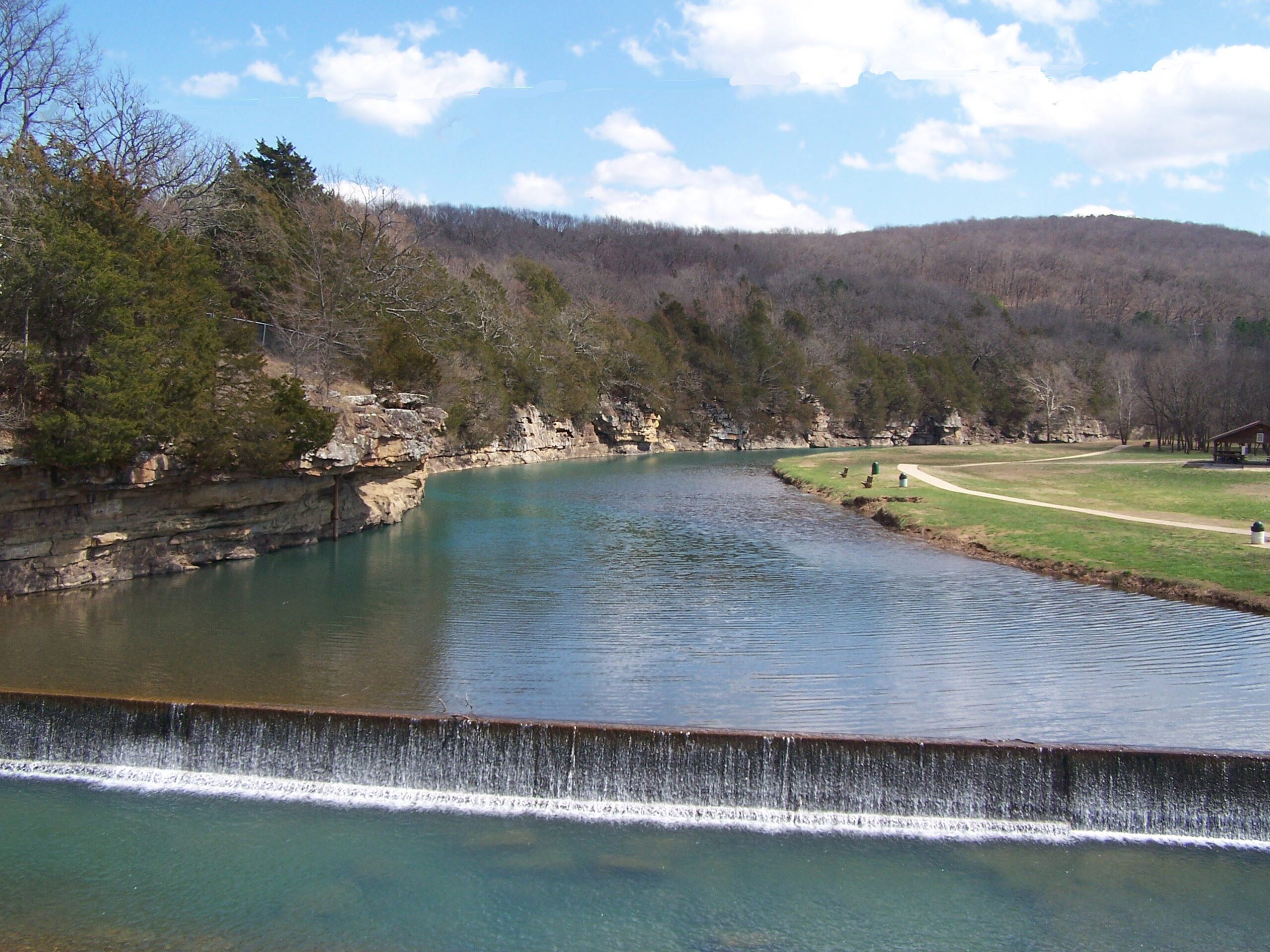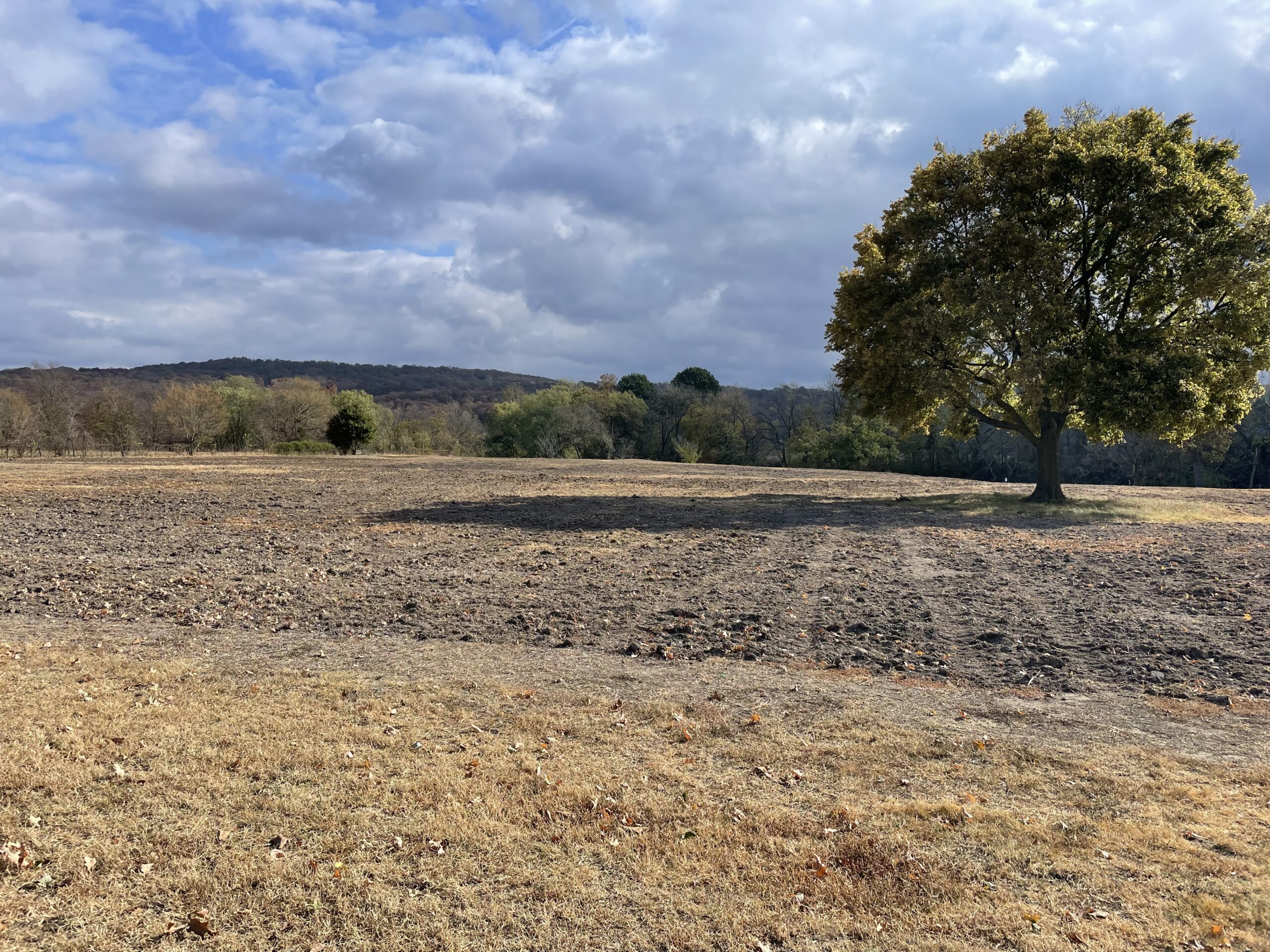What happens to a river when a dam comes down? Scientists are only beginning to understand the ripple effects. Low-head dams like the Huntsville Dam on War Eagle Creek have shaped fish communities and habitats for decades, but their true impacts are still being uncovered. To answer these questions, the Adams Fish Ecology Lab at the University of Central Arkansas is leading long-term monitoring of War Eagle Creek after the dam’s removal.
Nine sites along War Eagle Creek, plus five control sites on the nearby Kings River, are sampled three times each year. This schedule helps capture the natural seasonal rhythms of the streams and provides a clearer picture of how the ecosystem is changing.

Members of the Adams Lab pulling a seine to collect fish community data.
Since July 2023, the team has been out in the water using time-tested Ozark seining techniques. These nets not only give a representative snapshot of the fish community, but also allow sensitive species, known as Species of Greatest Conservation Need (SGCNs), to be released unharmed. Every fish is identified, counted, and tied to its habitat type (riffle, run, or pool). At the same time, habitat transects are conducted to track how the river’s flow and substrate change over time.

Habitat flow transect being taken in March 2024.
In deep pools where nets and other gear fall short, researchers trade seines for snorkels. By swimming long stretches of river in staggered lines, they can spot adult fish rarely captured in nets, as well as juveniles of species that are otherwise hard to detect. These data will help determine if larger, migratory fishes are found further upstream after the dam removal.

Members of the Adams Lab conducting a snorkel survey.
Back in the lab, data are analyzed to reveal how fish communities are shifting since the dam removal. Early results already show promising signs. Fine sediments once trapped behind the dam are flushing out of the system, reducing erosion and improving habitat. Reservoir-related species like bluegill and threadfin shad are becoming less common, while native stream species are rebounding. One especially exciting find is the young River Redhorse (Moxostoma carinatum), a rare species that hadn’t been seined in the creek until June 2025 are also on the rise. Redhorse are known for their long seasonal migrations.

The River Redhorse (Moxostoma carinatum), a species increasing in samples since monitoring began.
The Adams Lab will continue tracking these changes, building a long-term record of how rivers recover when barriers are removed. Each new data point tells a piece of the story, a story not only of fish and sediments, but of resilience, restoration, and the return of a free-flowing river.
Funding for the biological assessments on War Eagle Creek provided through an America the Beautiful Grant Challenge, in partnership with Arkansas Game and Fish Commission and partners.
Article contributed by: Jake Young, Ginny Adams, and Reid Adams
For more information, contact:
Ginny Adams
Director, Environmental Science Program
Professor Department of Biology
Lewis Science Center Rm 016
University of Central Arkansas
Conway, Arkansas 72035
https://sites.google.com/a/uca.edu/adams-fish-ecology-lab
Email: gadams@uca.edu












